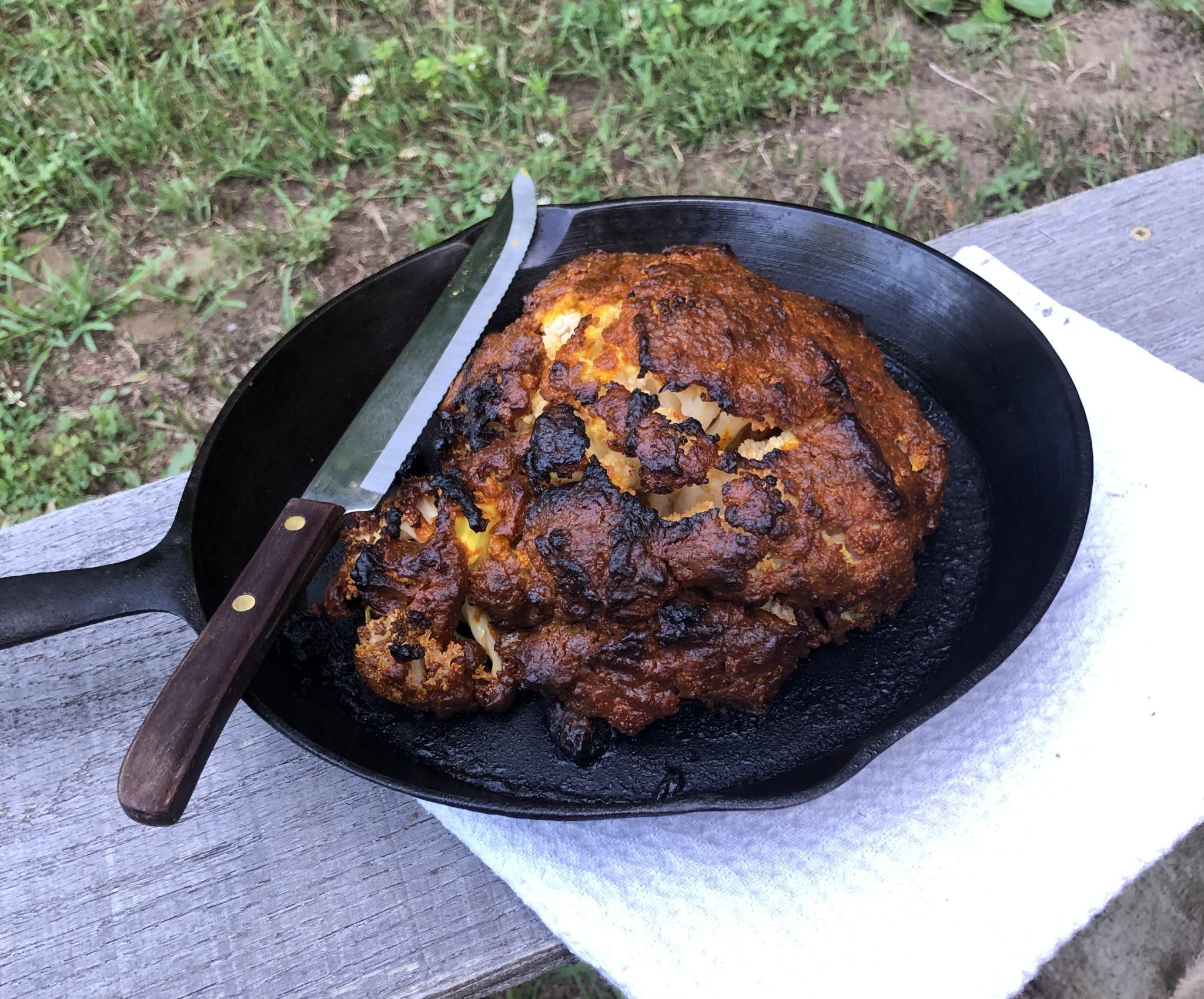When I eliminated meat and fish from my diet about two years ago I felt like I was lost. Growing up, my meals were organized as meat-vegetable-starch — a formula reinforced during my chef training. This can be a difficult structure to unlearn.
The animal-derived protein on the plate is always the star of the show. I did not want to be relying only on textured vegetable protein, wheat gluten or soy protein-based “sausages” to complete a meal. I wanted to create a satisfying meal where meat could be omitted without needing a replacement (how many times have we heard our dads ask “Where’s the MEAT?! to a perfectly delicious veggie pizza.)
Don’t get me wrong, there are days when all I think of is fried chicken, greasy pepperoni and steamed pork buns — meat is delicious. My goal is to encourage you to rethink the way you compose your overall diet, but specifically dinners, and provide tips/recipes that treat the humble vegetable with the same respect as your ribeye.
Put down the plate, grab a bowl
I find that eating dinner from a bowl allows me to layer flavours and textures in a way that eating from a plate does not support. Rather than thinking I need to have three-plus individual components, I can start with a grain or base of choice, top with roasted vegetables, legumes, toasted nuts, herbs, cheese and sauce.
Buy the RIGHT vegetables
To me, this means two things. Firstly, purchase vegetables you enjoy eating — there isn’t much point in forcing yourself to eat a beet if they aren’t your thing. Secondly, source your vegetables in the same way you source your grass-fed, free-range, cruelty-free beef. Invest in local farmers who grow flavourful, low-intervention crops. You will notice a difference in flavour and quality. We’re incredibly lucky that produce like this is accessible in our community. The farmers market and local CSA boxes provide affordable, accessible quality fruits and vegetables.
Don’t change your preparation process
Vegetables benefit from the same care that meat would. Experiment with dry and wet marinades, leave vegetables whole if you want to cook low and slow or cut smaller for a fast, hot cooking method. Season your batters and baste with butter and fresh herbs.
Research and prepare recipes from different cultures
Thankfully, there are food cultures from all around the world who have been eating only or mostly vegetables for a long time. Cookbooks from your local library are easy ways to learn about ingredients and techniques that have been used for generations to make meals delicious and satisfying without animal proteins. Taking the time to learn other food cultures can provide an understanding of ingredients.
The most important part of this recipe is the marinade — It’s so delicious on any vegetable. Specifically, I use it here on a head of cauliflower. It’s versatile enough to be tossed with asparagus, potatoes, red onion, garlic scapes, cabbage, etc. and grilled. The chickpea flour creates a delicious crunchy texture and richness.
BBQ Cauliflower Marinade Recipe
¼ cup neutral oil (something other than olive: canola, sunflower, coconut, avocado, etc.)
3 tbsp honey
4 cloves fresh garlic
½ tsp dried ginger
1 tbsp cumin
½ tbsp coriander
2 tbsp turmeric
1-3 tsp chilli flakes or one to two fresh green chillies (depending on how spicy you’d like it)
½ tsp cinnamon
1 tsp paprika
2 tbsp chickpea flour
Big pinch of salt and freshly cracked pepper
1 head of cauliflower (or the equivalent in seasonal vegetables, paneer, tofu or tempeh)
Substitutions
As always, if you do not have a specific ingredient on hand, think of appropriate substitutions.
- Honey for maple syrup, agave, dates or brown sugar.
- Paprika for another smokey/sweet seasoning like chilli powder.
- Fresh garlic is always preferred, but garlic powder will do.
- Oil for butter or ghee.
- Chickpea flour for another bean flour — even a few tbsp of soaked and blended lentils will do.
- Spices are fairly specific, and if you have them use them. Spice blends that include these in their list of ingredients can be subbed in a pinch.
Instructions
Place the marinade ingredients in a blender and process until smooth. Alternatively, blend with a hand blender if these appliances are not available. Finely chop garlic and chilli, mix with remaining ingredients until well-combined.
Skip this step if using veggies other than cauliflower: Remove excess leaves from the cauliflower. Flip over and carefully remove core, keeping the rest of the head of cauliflower intact.
In a large bowl, pour ⅓ of your marinade into the bottom of the cauliflower and let sit for a few minutes. Then pour the remaining marinade over the top — rub the marinade in to ensure there are no pieces of unseasoned cauliflower. If using other vegetables, simply toss them in the bowl with the marinade. Allow veggies to marinate in the fridge for one to 12 hours.
Preheat the BBQ to medium heat, or the oven to 350 degrees. Remove the cauliflower from the fridge and place it in a heat resistant, heavy-bottomed pan. Place in the oven for about 45 minutes to one hour, basting with a spoon at the 30-minute mark. If cooking on the BBQ, close the lid and baste every 15 minutes until the cauliflower is tender (can easily pierce with a fork.)
Remove from the cauliflower from the pan and serve on a platter. I like to serve this alongside a simple flatbread with toppings like seasoned yogurt, tomatoes, cucumbers, herbs and pickled onions. If you’ve marinated a variety of vegetables, eat them in a salad or grain bowl (rice, quinoa, barley) with chickpeas or a soft boiled egg.
Taylor Devalk is a trained chef and baker. Check out her food blogging for more tips and recipes on Instagram @taydevalk




Leave a Reply